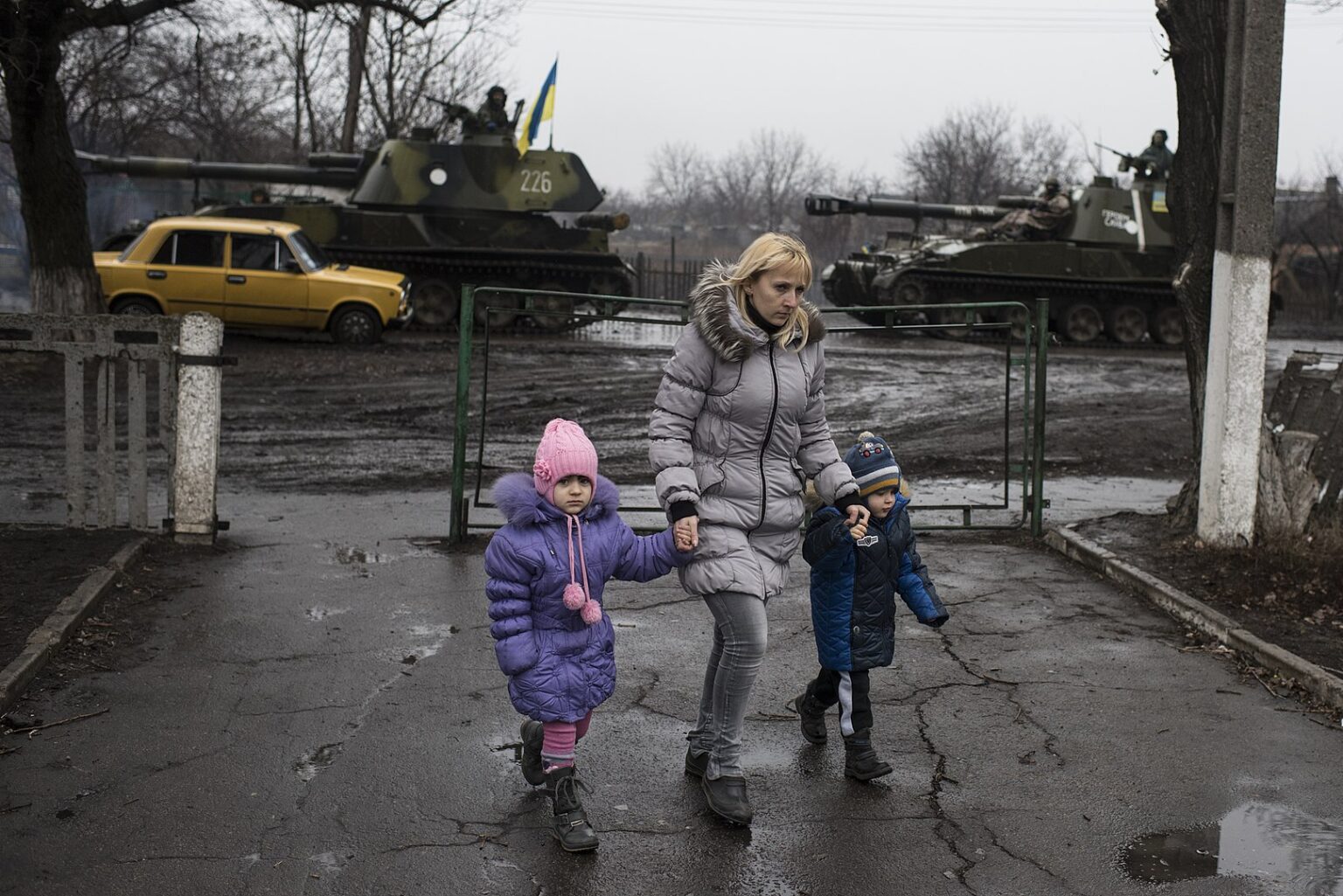Before the Russian invasion, Ukraine was considered to be on the borders of Europe, on the frontier. By history and to a large extent by culture, it belonged to what Moscow calls the “Russian world”. Now this view is changing, Europeans are discovering a country that is closer than they thought. For Ukrainians, however, it has been different. Since their independence in 1991, with the collapse of the Soviet Union, they have increasingly seen Europe as a destination – and not just for emigration – a trend that has been growing in recent years.
For those Ukrainians still attached – at least by family roots – to Russia, the invasion and bombings have brought with them a dramatic turn of events. Vladimir Putin’s aggression means a rupture, and if the Russian president wanted to keep Ukraine within Moscow’s political and economic sphere of influence, he could now only do so by force.
A war is the consequence of a failure, or a series of failures. And this war is no exception.
Ukraine has been the extreme example of how Putin has been unable to make it attractive for the former Soviet republics to remain on his side by offering them a profitable partnership. In this failure, Ukraine represents Moscow’s greatest loss, with its enormous agricultural wealth, its economic potential, its privileged access to the Black Sea and its membership of the Slavic world, of which Russia sees itself as the head.
In reality, the EU has never been in a hurry to welcome Ukraine. Even before the war it was a country with major problems, the biggest of which was corruption, and for years European institutions have been trying to help it implement political and administrative reforms in a very long and complicated transition to democracy.
When Brussels and Washington gave decisive support in 2014 to a pro-Western popular revolt – the so-called Maidan – Russia’s reaction was to try to stop it by annexing the Crimean peninsula and encouraging the separation of the traditionally Russian territories from the Donbas region in the east of the country.
Neither the Ukrainian army was able to reverse the situation, nor was Western diplomacy able to negotiate an acceptable solution for Ukraine with Russia. President Putin’s victory was to leave the country partially under military occupation, tied hand and foot. That was the West’s great failure.
Russia’s great fear was not that Ukraine would one day join the EU, but that it would join NATO. Virtually all European countries on its borders belong to the Western military organisation, which is a threat to Moscow. In the months leading up to the invasion, and while massing troops, Putin demanded two things: a reversal of successive enlargements of the Atlantic Alliance since 1997 and guarantees that neither Ukraine nor any other country would join. But there was no negotiation. There was talk of war. And when there is talk of war, it is likely to break out.
July will mark 500 days since 24 February 2022, when air-raid sirens started blaring in Kyiv, amid explosions of missiles and bombs at military installations around the capital. It is still too early to say whether the efforts to prevent war by the rotating EU presidency, which was held by France, were adequate or sufficient, and whether the weapons could have been stopped a month later in peace talks.
Very few experts then truly believed that Russia would invade Ukraine because the effects would be gigantic: a collapse in world food supplies – Ukraine and Russia being the major suppliers of grain and fertilisers – and an overnight return to the danger of nuclear confrontation.
Finally, it seems obvious that no one wants more atomic bombs or the scourge of famine, and the impact has not been as great as feared. But the trade-off can also be read in terms of failure. For Europeans, an increase in military spending; for Putin, just what he did not want: two hitherto neutral European countries, Sweden and Finland, will soon join NATO.
The United States is the largest contributor of financial and military aid to Ukraine, followed by European institutions. But there are differences: Washington’s military aid is greater than its financial aid, and in the case of Brussels it is just the other way around, financial aid is greater. In per capita terms – relative to the number of inhabitants – the United States is actually the tenth country, after the three Baltic republics (Estonia, Latvia and Lithuania), Poland, the Czech Republic, Bulgaria, the Netherlands, Norway and the United Kingdom.
The EU27 is always criticised for being a slow-moving body. The economic sanctions it imposes on Russia to hinder its war machine take a long time to implement, and perhaps precious months were lost at the beginning of the invasion. Now, however, it is European countries that are taking the lead in supplying arms to Ukraine. The so-called ‘coalition of the tanks’ came from Germany and France (as well as the UK and the US), and something similar is happening with a new ‘coalition of the planes’.
The prudence of Washington, which does not want the Russians to see this war as a direct confrontation with the US, and the unity being shown by European partners – with the sole exception of Hungary – is putting the EU at the forefront. It is no longer the same Europe of the 1990s, which did not face the wars in the former Yugoslavia together.
On the other hand, the humanitarian response, the most important chapter in the assistance to Ukraine, has been a success story: eight million people have taken refuge in Europe with guarantees, two and a half million of them in Germany and Poland. The same did not happen with refugees from the Syrian war – with the exception of Germany, which took in a million – or from Afghanistan, but the step taken this time will have to serve as an example for the future.
The next thing, the day the guns fall silent, will be not only to continue to help the Ukrainians, but to help the Russians face the new reality in which they will find themselves. Only we Europeans can do that.



